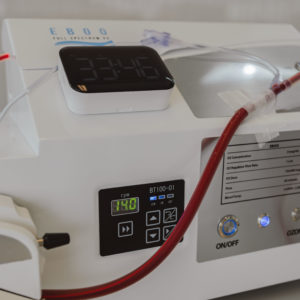5 min|Rhiannon Lockhart
Fertility Awareness Method (FAM): What You Need to Know
Nutrition, Sexual Health, HormonesThe Fertility Awareness Method (FAM) is a tool used by those looking to conceive and prevent conception without the use of birth control methods outside of condom use.
It can be 77 to 98 percent effective, depending on how accurately you track and which methods you use. (1) In this blog, we’ll review the different ways to use FAMs to ensure you are making the most of it.
Why do people use FAMs?
In the case of someone looking to conceive, this gives them the most accurate dates for fertility. For someone looking to prevent a pregnancy, they may choose FAMs instead of hormonal birth control or an IUD because:
They want more understanding of their body and its natural rhythms
Hormonal birth control caused other symptoms like mental health issues or weight gain
An IUD was uncomfortable or caused more intense menstrual cramps
They are inconsistent with their birth control pill

Here are 3 Fertility Awareness Methods you can try:
Basal Body Temperature Tracking (BBT)
Your basal temperature is your temperature at rest. This means taking your temperature immediately upon waking.
What can impact the accuracy?
Restless sleep (especially the three hours before taking your temperature)
Illness
Alcohol consumption
Travel
Medication
BBT is beneficial when used for at least 3 months as it analyzes patterns in your temperature relating to ovulation. When tracking your BBT, people will use phone apps or paper charts. Typically, you will see an increase in your BBT the days right after ovulation, then a steady, higher temperature, until your period. (2)
Luteinizing Hormone (LH) Tests/Ovulation Predictor Kits (OPKs)
Between 12 to 36 hours before you ovulate, the LH levels increase drastically, which is called the “LH Surge”. LH tests, also known as OPKs, test for a surge in luteinizing hormone, telling a person whether ovulation is in the near future.
These tests can be extremely beneficial for those looking to conceive as it gives a window of accuracy for the most fertile days, especially if you do not have a regular cycle.
LH tests are not 100 percent accurate at predicting ovulation. While they will tell you when there is an LH surge, which should then trigger ovulation, this is not always correct. In some, like those living with PCOS, there can be an increase in the luteinizing hormone without an egg being released. If you think this is the case for you, consider looking at other fertility markers, like cervical mucus and connecting with your healthcare provider for additional testing.
Remember, sperm live up to 5 days. This means that having unprotected sex in the few days leading up to a positive LH test can result in pregnancy. Use a barrier method, like condoms, during this time to prevent a pregnancy.
Cervical Mucus
This is the discharge that you see in your underwear through the month. It starts just before you get your first period in puberty and will continue after menopause, although in lesser amounts and variations.
This cervical mucus plays a special role in aiding in conception, and can be a key indicator for which days you are the most fertile. (3)
Follicular phase:
- starts out dry, and will become sticky/tacky.
Ovulation phase:
- clear and stretchy, like egg whites.
Luteal phase:
- sticky/tacky again and will dry out right before you bleed.
Period Tracking:
- Period tracking is a widely used method for fertility awareness, although it can be the least accurate.
- Period trackers do just that: predict your ovulation window and next period based on historical data using a general rule-of-thumb from the average population.
- They can be helpful to use in conjunction with other FAMs, but should not be the only method used if you are actively trying to conceive or avoid pregnancy.
What if you have an irregular cycle?
Using multiple FAMs can help you to be more accurate with your fertility window. In fact, using fertility awareness with an irregular cycle can help you to see if there are patterns or indicate any underlying issues.
For example: if you get a positive LH test and have cervical mucus indicating ovulation, but get your period 5 days later, you may have a luteal phase defect. Or maybe it takes 30+ days to ovulate, which can suggest a vitamin D deficiency, estrogen issues or a history or birth control use (4) (5).
When you have more information like the above, you can get to the root of your irregular cycles and make lifestyle and dietary changes to rectify it.
What if I’m avoiding a pregnancy?
As mentioned above, accuracy rates can be high, especially when using multiple FAMs correctly. This is referred to as the symptothermal method.
Until you are aware of your fertility patterns, it is typically advised to use a barrier method through your cycle. Depending on your situation and your cycle history, it may be necessary to use a barrier method from your period until known ovulation to reduce chances of conception even further.
References
Related Articles

5 min|Dr. Alex Chan
EBOO for Chronic Inflammation: A Natural Approach for Systemic Relief
Regenerative Medicine, EBOO Therapy
5 min|Dr. Alex Chan
EBOO Therapy for Autoimmune Conditions: Exploring the Potential Benefits
Autoimmune Disease, Regenerative Medicine, EBOO Therapy


